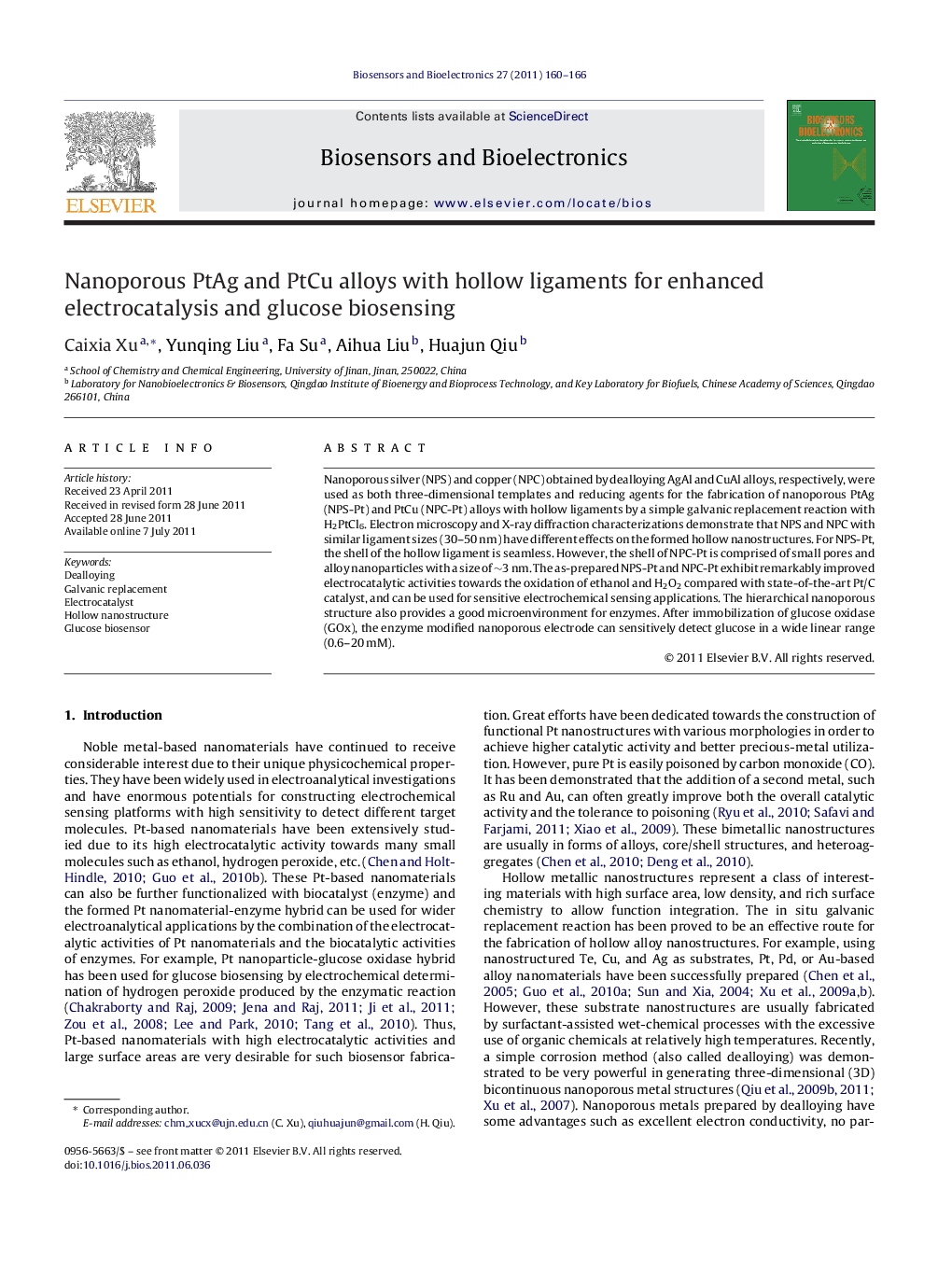| Article ID | Journal | Published Year | Pages | File Type |
|---|---|---|---|---|
| 867771 | Biosensors and Bioelectronics | 2011 | 7 Pages |
Nanoporous silver (NPS) and copper (NPC) obtained by dealloying AgAl and CuAl alloys, respectively, were used as both three-dimensional templates and reducing agents for the fabrication of nanoporous PtAg (NPS-Pt) and PtCu (NPC-Pt) alloys with hollow ligaments by a simple galvanic replacement reaction with H2PtCl6. Electron microscopy and X-ray diffraction characterizations demonstrate that NPS and NPC with similar ligament sizes (30–50 nm) have different effects on the formed hollow nanostructures. For NPS-Pt, the shell of the hollow ligament is seamless. However, the shell of NPC-Pt is comprised of small pores and alloy nanoparticles with a size of ∼3 nm. The as-prepared NPS-Pt and NPC-Pt exhibit remarkably improved electrocatalytic activities towards the oxidation of ethanol and H2O2 compared with state-of-the-art Pt/C catalyst, and can be used for sensitive electrochemical sensing applications. The hierarchical nanoporous structure also provides a good microenvironment for enzymes. After immobilization of glucose oxidase (GOx), the enzyme modified nanoporous electrode can sensitively detect glucose in a wide linear range (0.6–20 mM).
► Nanoporous PtAg and PtCu alloy with hollow ligaments are fabricated using nanoporous Ag and Cu as both templates and reducing agents. ► The shell of the nanoporous PtAg ligaments is seamless, while that of nanoporous PtCu is comprised of small pores and alloy nanoparticles. ► Nanoporous PtAg exhibits enhanced electrocatalytic activity and sensing performance compared with nanoporous PtCu.
